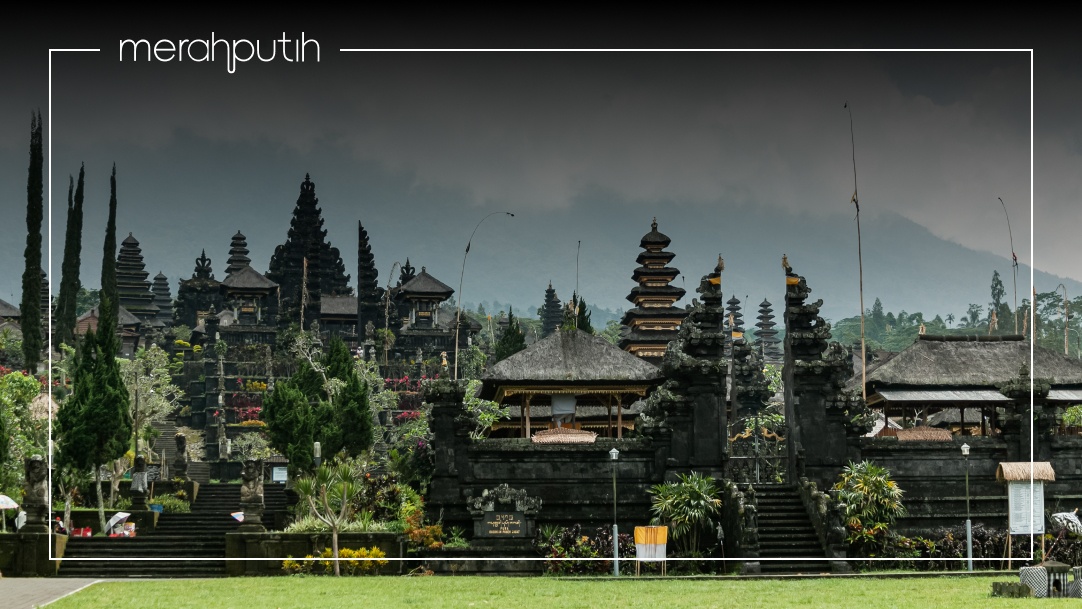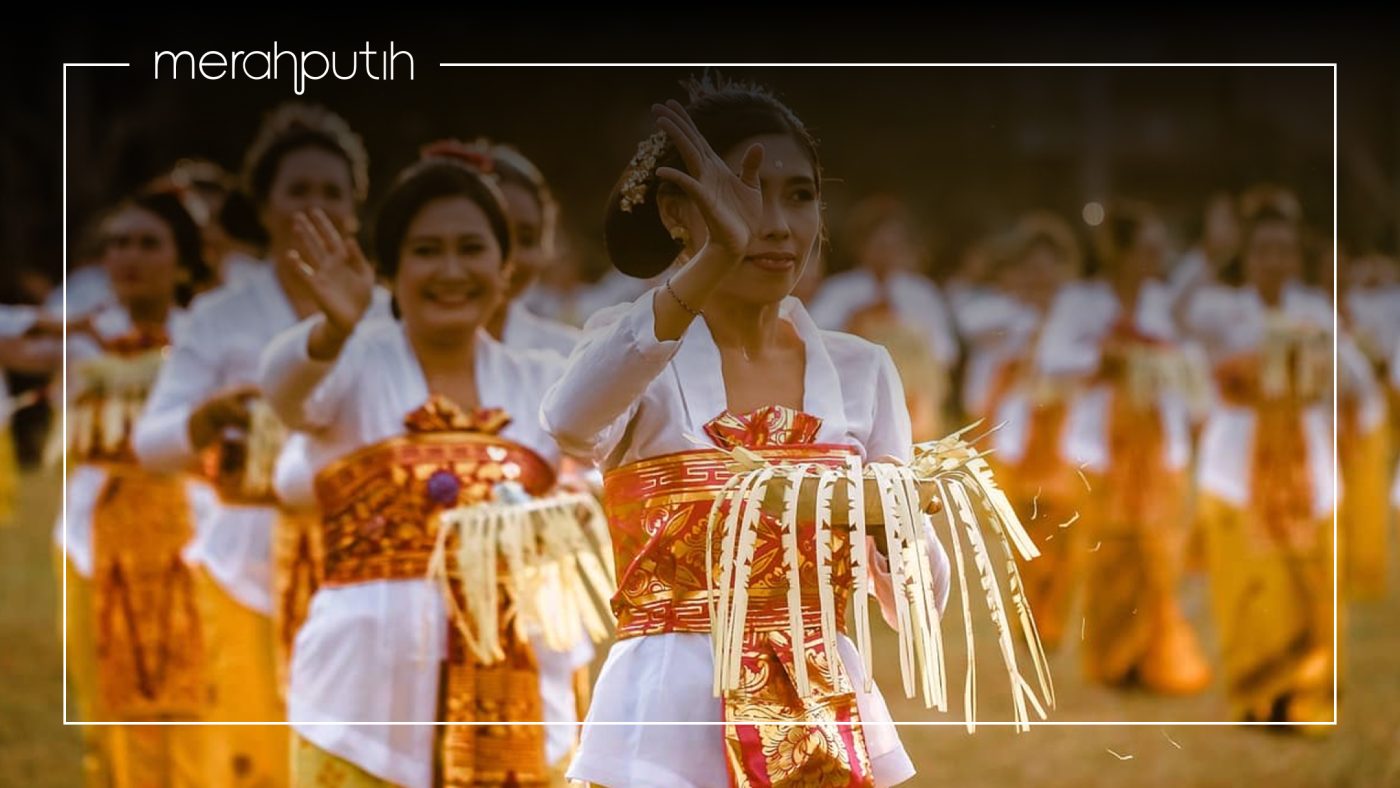Sitting 900m up the slope of the great Mount Agung, you will find the infamous temple, Pura Besakih. Located in the Besakih Village in East Bali, this establishment is often referred to as the Mother Temple of Hindu Bali. The temple compound is set against the backdrop of Mount Agung’s peak and overlooks the island of Bali spread out below. It’s considered the largest and holiest temple on the island, serving as a site of worship and a venue for major religious rituals and festivals year-round.
The origins of Pura Besakih
Many believe that the Mother Temple was originally built by the Indian Hindu religious elder Rsi Markandeya in 1284. Legend has it that Markandeya received a divine instruction to build the temple as he was meditating in the planes of Dieng in Java.
Following the call, Rsi Markandeya and his followers made the long and perilous journey from Java to Bali, through the forests until they reached Besakih Village. Mount Agung was considered to be a strategic location for its high vantage point, and so the temple was built.
The name “Besakih” comes from the Sanskrit “Wasuki” meaning “salvation.” It also bears reference to the myth about Naga Basuki, a dragon in Balinese Hindu folklore that is said to reside in the crater of Mount Agung.
Architecture of the Mother Temple
While known as a temple, Pura Besakih is actually a vast compound consisting of 23 different temples, each serving their own function and symbolising a different aspect of Balinese Hindu cosmology. The main temple, Pura Penataran Agung, is the centre for religious activities, built on six tiers ascending in parallel up the slope of the mountain.
Within the compound, there are Meru buildings designated for worship of Sang Hyang Widi or The Supreme God. These buildings are recognisable by their tumpeng sari rooves, a series of tiered roof shingles that mirror the spiritual levels of Hinduism.
Balinese Hinduism behind the layout of Pura Besakih
Being the holiest temple in Bali, the entire temple compound was designed with Balinese Hindu principles in mind.
Tri Hita Karana
This underlying philosophy of the island’s faith places importance on peaceful relations with the gods, nature, and fellow man. Pura Besakih’s open layout is one that encourages social interactions, with plenty of vast spaces for mass prayer.
Tri Mandala
The concept of Tri Mandala divides temple spaces into three designated zones.
Nista Mandala
This is the outermost area where general activities take place. Here, you can find the market with vendors selling food, drinks, and souvenirs.
Madya Mandala
The inner area is used for religious gatherings and ceremonies.
Utama Mandala
The innermost area is the main part of the temple, considered to be the compound’s spiritual centre.
Ceremonies at Pura Besakih
In addition to major holiday ceremonies such as Galungan and Kuningan, the Mother Temple is home to both routine and periodic ceremonies throughout the years.
Routine ceremonies
Odalan ceremony is carried out every 210 days according to the Balinese Saka calendar. This is a festive moment celebrating the anniversary of the temple and honouring the gods that reside there. The temple is decorated for a party and many travel from their respective villages to visit Pura Besakih, where they celebrate with prayer, music, and dance.
Periodic ceremonies
Every few years, purification rituals are carried out at the Mother Temple.
Mecaru
This is a ritual to cleanse nature off negative energy, usually done after a natural disaster or pandemic.
Panca Wali Krama
This ceremony takes place every ten years to purify the temple.
Ida Bhatara Turun Kabeh
Every 12 years, all the relics of deities in temples across Bali are paraded up to Pura Besakih.
Yadnya Eka Dasa Rudra
Happening every 100 years, this is the biggest and holiest tradition of sanctification to take place at the Mother Temple.
Visiting Pura Besakih
If you’re planning a visit to the temple, it’s recommended to come during dry season. Between April and October, the weather in Bali offers clearer skies, allowing you to explore the temple compound and see unobstructed views of the mountain and the island below.
The complex opens at 7am, and a crowd begins to build around 10am, so coming in between these hours is ideal. It will also ensure just the right weather – sunny but not scorching hot yet.
There is an entrance fee of Rp.150,000 per person. This includes:
- Sarong rental
- Local guide
- One-way shuttle bus from the main entrance to the top of the temple compound
What to prepare for your visit to the temple
Here are some things you should note before coming to Pura Besakih.
Comfortable shoes
The temple compound is a vast area. You will be walking far and going up many stairs, so be sure to wear footwear to support these activities.
Appropriate dress
Always err on the side of modesty when coming to Balinese temple. Be sure to cover up as much as possible. If you happen to be wearing shorts or tank tops, put on your rented sarong as a sign of respect.
Cash
There will be food and drink vendors as well as souvenirs inside, so it’s best to have cash on hand.
After exploring Balinese culture at the temple and getting your 10,000 steps in, why not experience the island through culinary? From Besakih, make your way back south to the Petitenget area where you’ll find Merah Putih restaurant. Here, you can indulge in innovative, modernised takes on age-old Balinese and Indonesian recipes, including the infamous ayam betutu and nasi campur. Whether you’re coming for lunch or dinner, Merah Putih is sure to spoil your taste buds and take you on a flavour journey through Indonesia’s most beloved dishes.
Book a table today and use these gift vouchers to secure your spot.
FAQ
The entrance fee for Pura Besakih is Rp.150,000 per person. This includes:
– Sarong rental
– Local guide
– One-way shuttle bus from the main entrance to the top of the temple compound
Pura Besakih is known as the Mother Temple. Its compound is set against the backdrop of Mount Agung’s peak and overlooks the island of Bali spread out below. It’s considered the largest and holiest temple on the island, serving as a site of worship and a venue for major religious rituals and festivals year-round.
Said to have been built in 1284, Pura Besakih has now been a religious site for thousands of years.
If you’re planning a visit to the temple, it’s recommended to come during dry season. Between April and October, the weather in Bali offers clearer skies, allowing you to explore the temple compound and see unobstructed views of the mountain and the island below.



